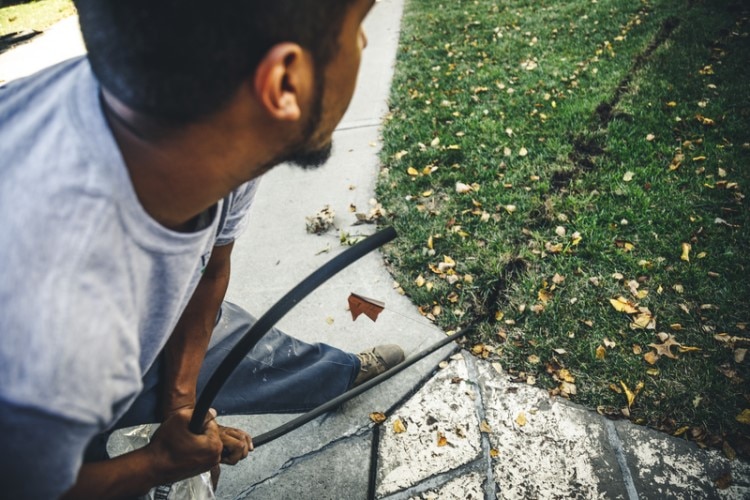
Installing an irrigation system is one of the most valuable services you can offer as a landscape contractor. A well-designed and properly installed system not only keeps landscapes healthy but also ensures water is used efficiently. However, even experienced contractors can make costly mistakes that lead to inefficient water usage, plant stress and unhappy clients. Avoiding these common pitfalls can help you deliver top-notch installations every time.
1. Poor System Design
Designing an irrigation system without considering the landscape’s specific needs is a major misstep. Every project has unique requirements based on factors like soil type, plant varieties, sun exposure and slope. A one-size-fits-all approach can lead to overwatering, underwatering or uneven coverage. Take the time to assess the site thoroughly and create a tailored design that ensures optimal water distribution.
Tip: Use zoning to separate different areas based on their watering needs. Group plants with similar water requirements together to maximize efficiency.
2. Ignoring Water Pressure and Flow Rate
Many contractors overlook the importance of matching the irrigation system’s design with the property’s water pressure and flow rate. If the system is not calibrated correctly, it can lead to sprinkler heads that do not operate properly, uneven water distribution or even system failure.
Tip: Measure the water pressure and flow rate before installation. This data will guide you in selecting the right equipment and avoiding performance issues. Try a controller like the Hunter Wi-Fi Smart Controller to integrate local weather data to make water-saving schedule adjustments.
3. Incorrect Sprinkler Head Placement
Placing sprinkler heads too close together, too far apart, or at the wrong angles can create dry spots or areas of excess water. This can stress plants and waste water. Sprinkler heads should be positioned to ensure proper head-to-head coverage, meaning the spray from one head reaches the next.
Tip: Follow the manufacturer’s spacing guidelines and adjust placements as needed to ensure full coverage of the target area. Grab some flags and flagging tape to help ensure your sprinklers are spaced appropriately.
4. Not Adjusting for Sun and Shade Areas
Different parts of a landscape have varying sunlight exposure, affecting how much water they need. A common mistake is using the same irrigation schedule for all zones, which can lead to overwatering shady areas and underwatering sunny spots.
Tip: Adjust the watering schedules and output based on the sun exposure of each zone. Use drip irrigation for plant beds in shaded areas to conserve water and prevent root rot. Solar powered outdoor controllers and timers are the perfect solution to utilize the sun and avoid too much sun exposure.
5. Improper Backflow Prevention Installation
Backflow prevention devices are crucial for protecting your client’s water supply from contamination. Improper installation or the absence of a backflow preventer can lead to health hazards and potential legal issues.
Tip: Always check local regulations regarding backflow prevention and ensure it’s installed correctly, following manufacturer instructions and local codes. Backflow devices like those from Wilkins and FEBCO can help reduce the risk of contamination and health hazards.
6. Failing to Test the System Before Completion
Once the system is installed, it’s tempting to call it a day. However, skipping a thorough test run can lead to missed issues that cause problems later. Sprinkler heads might be misaligned, zones could be malfunctioning, or there could be leaks that weren’t initially visible.
Tip: Always test the entire system before completing the job. Check for even coverage, proper functioning of all zones, and ensure there are no leaks or pressure issues.
7. Neglecting to Consider Future Growth
Landscapes are dynamic; plants grow and evolve over time. A common mistake is failing to account for future growth when placing irrigation components. Shrubs and trees can eventually block spray patterns, rendering the system ineffective.
Tip: Anticipate future growth by adjusting sprinkler placements and selecting heads that can be easily modified or extended as the landscape matures.
8. Improper Pipe Depth and Protection
Installing pipes too close to the surface or failing to protect them from potential damage can lead to costly repairs down the road. Shallow pipes are susceptible to damage from mowers, foot traffic, or extreme weather conditions.
Tip: Bury pipes at the recommended depth and use protective materials, such as sleeves, in high-traffic areas to prevent damage.
9. Incorrectly Setting Controller Schedules
Setting up the controller can be confusing, and mistakes here can undermine the entire system. Incorrect schedules can lead to overwatering, underwatering, or wasting water during rain events.
Tip: Take the time to program the controller correctly, setting up schedules that match each zone’s specific needs. Consider installing a smart controller that adjusts based on weather conditions.
10. Skipping Maintenance Education for Clients
Once the system is installed and running smoothly, your job isn’t entirely done. Clients need to understand basic maintenance to keep the system operating efficiently. Skipping this step can lead to misuse, neglected repairs, and ultimately, dissatisfaction.
Tip: Provide clients with a brief tutorial or guide on how to operate and maintain their irrigation system. Offer maintenance services to keep the system in top condition.
Conclusion
Avoiding these common mistakes can elevate the quality of your irrigation system installations and lead to better outcomes for your clients. A well-installed irrigation system is a testament to your expertise and attention to detail, ensuring that landscapes remain beautiful, healthy, and water efficient. By investing time in proper planning, testing, and client education, you’ll build a reputation for delivering top-notch irrigation solutions that stand the test of time.
Contact your local SiteOne branch today or learn more about irrigation systems at SiteOne.com.


